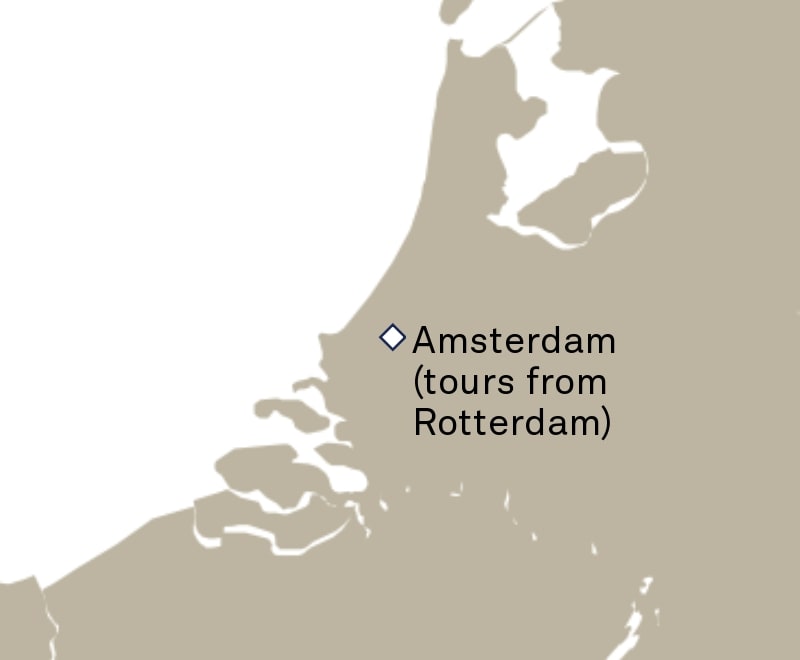Rotterdam, Netherlands cruises

Few have proved so adept at controlling the water in and around their borders as the Dutch, and nowhere proves this more than Amsterdam. Here canals create a swirl of arcs around the heart of this city. When they were built in the late sixteenth and early seventeenth centuries the purpose was to funnel the water from the marshland around and create usable strips of land in between.
The result was a triumph. It provided space for the terraces of handsome, tall and slim gabled houses to spring up. The canals themselves are beautiful too. Yours to explore by bike, by canal boat or on foot, they’re lined with trees and cafés and criss-crossed with charming humped bridges, many illuminated at night. No wonder the whole area is a designated UNESCO World Heritage Site.
What is less often appreciated is that the city was, for a relatively brief time, defended in the manner much of it was created, by controlling water. Indeed a second UNESCO World Heritage Site actually surrounds and protects Amsterdam. It’s an astonishing defence line, over 80 miles long that was assembled between the early 1880s and 1920s. It consists of 46 forts and batteries together with an intricate system of canals and locks, which could temporarily flood a series of polders. These tracts of low-lying land were surrounded by shallow walls, and could be filled to be too deep for invaders to wade through but too shallow for boats.
Amsterdam is most definitely a city for art lovers. The majestic Rijksmuseum displays thousands of paintings and sculptures, including masterpieces by Rembrandt, Vermeer and Frans Hals. Close by the Van Gogh Museum holds the largest collection of his works in the world. If your tastes are more modern, head next door to the Stedelijk Museum Amsterdam, a showcase of contemporary art and design.
Admire some of the city’s grand landmarks, like Oude Kerk, the imposing 800-year-old church, or the opulent Royal Palace on Dam Square. Far less grand but far more poignant is Anne Frank House, where the diarist famously hid with her family from the Nazis.
Should you wish to shop in Amsterdam, you’ll find any number of quirky boutiques dotted around. The Albert Cuypmarkt, a street market open every day except Sunday, is a real experience. Around 250 stalls clamour for your attention, selling all kinds of everything. They include various food vendors too, and you might be tempted to recharge your batteries with a stroopwafel, a waffle made from two thin layers of baked dough with a gooey caramel filling.
Another Amsterdam institution is Bloemenmarkt, floating on houseboats and filled with the heady scent of seasonal flowers. If you’re visiting in April or May, a trip out to the tulip fields reveals bold stripes of yellow, pink and red across the Dutch countryside. Visitors arriving at the end of the year will be rewarded with a number of Christmas markets scattered festively across the city.